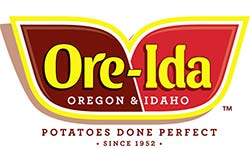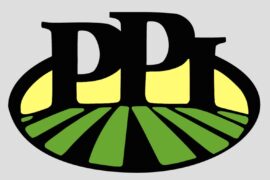Is Ore-Ida on the chopping block? According to a CNBC report on April 23, the Kraft Heinz parent company of the retail frozen potato-based products brand in North America has engaged investment bank Evercore Partners to look into prospects for selling off the household name asset.
 Speculation over a possible sale came just one day after it was announced that Miguel Patricio is scheduled to succeed Bernardo Hees as chief executive officer of debt-laden Kraft Heinz on July 1. The multinational food and beverage giant, formed in a $49 billion transaction in 2015 crafted by 3G Capital and Berkshire Hathaway, has $3 billion in debt coming due in 2020. Much of it may have to be refinanced, according to Wall Street analysts.
Speculation over a possible sale came just one day after it was announced that Miguel Patricio is scheduled to succeed Bernardo Hees as chief executive officer of debt-laden Kraft Heinz on July 1. The multinational food and beverage giant, formed in a $49 billion transaction in 2015 crafted by 3G Capital and Berkshire Hathaway, has $3 billion in debt coming due in 2020. Much of it may have to be refinanced, according to Wall Street analysts.
Potential buyers of Ore-Ida could include Lamb Weston as well as private equity firms, and the price could be in the range of $1.5 billion to $2 billion, according to a story written by Lauren Hirsch. The CNBC reporter did not cite sources, as anonymity was requested since the information is confidential.
“While Kraft Heinz’s focus is on the frozen potato maker, it would also consider a sale of its entire frozen food business, which includes brands like Smart Ones and Devour, should there be buyer interest,” wrote Hirsch, again attributing the information to anonymous sources.
 Ore-Ida products packed in eye-catching red bags run the gamut from proprietary Tater Tots and Golden Crinkles french fries and steak fried potatoes to hash browns, grillers, homestyle mashed potatoes, shredded potatoes, twice baked potatoes, onion rings and many other spud-based specialties.
Ore-Ida products packed in eye-catching red bags run the gamut from proprietary Tater Tots and Golden Crinkles french fries and steak fried potatoes to hash browns, grillers, homestyle mashed potatoes, shredded potatoes, twice baked potatoes, onion rings and many other spud-based specialties.
The company was founded in 1952 in the eastern Oregon town of Ontario, near the Idaho border – hence the name Ore-Ida. After going public nine years later, it was acquired by Pittsburgh, Pennsylvania-headquartered H.J. Heinz Company (now Kraft Heinz) in 1965. McCain Foods bought its foodservice division in 1997, along with five production plants.
According to Hirsch’s CNBC report, the No. 1 priority at Kraft Heinz at the moment is shedding brands regarded as especially vulnerable to competing private label products championed by supermarkets and other retail operators.
“While consumers may be willing to pay a bit more for products for which they have strong brand affinity, like Heinz ketchup, the same cannot be said for other products, like frozen potatoes,” she wrote.
Potato Pay Day
Meanwhile, Ore-Ida’s “Meet Potato Pay” campaign to get children to eat their dinner remains very much on the front burner. The way it works is that each french fry counts as a piece of crispy golden currency designed to be the most satisfying bribery tool possible.
Parents are advised to “Just pay your child with the Ore-Ida fries they love to eat, in return for bites of the foods that they don’t. For example, one bite of chicken = one fry, a mushroom = three fries and a spoonful of quinoa = five fries. Refer to the easy-to-use mealtime bribery chart, or “Frynancial Guide,” to see the fry value of various food items. “
The idea for Potato Pay is simple yet powerful – mealtime is a real struggle for parents. Whether it is a bad mood or a newfound dislike of a vegetable, there are a lot of obstacles that can derail a meal or make it a battle. Ore-Ida likes to think that it is “giving parents a little more control, so their kids can be full and happy.”






